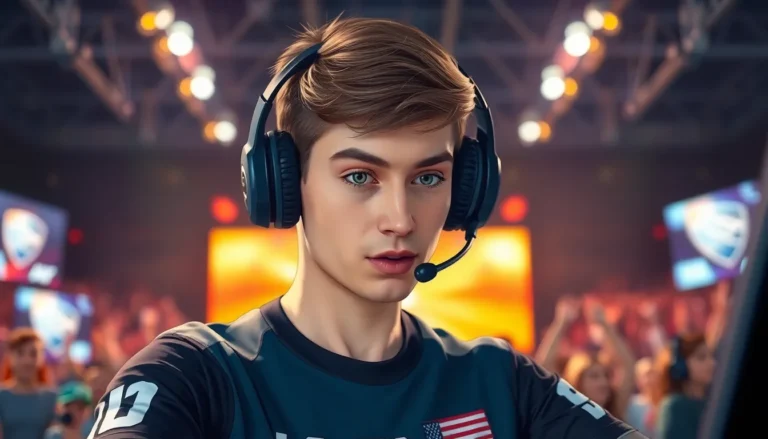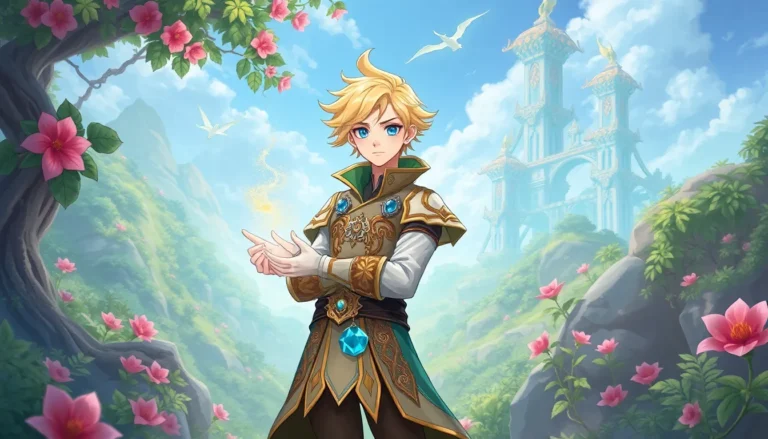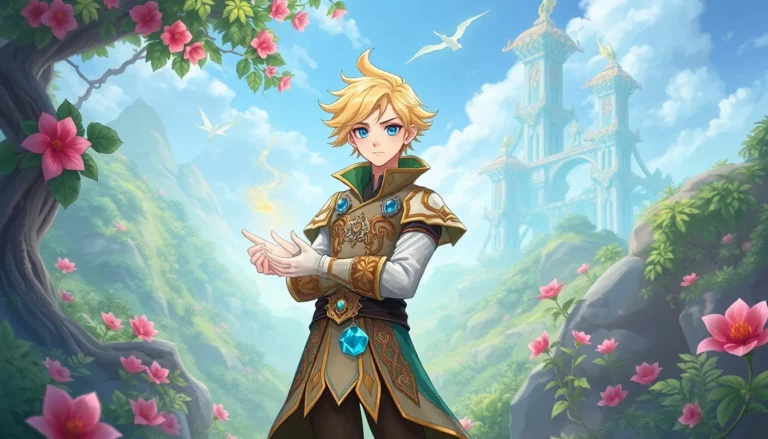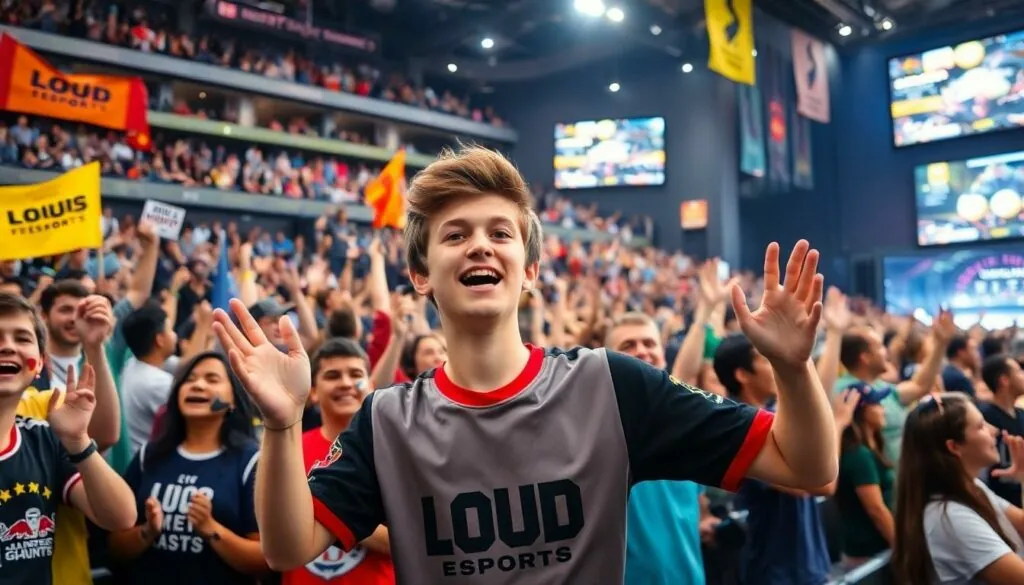Table of Contents
ToggleIn the vibrant world of esports, where strategy meets adrenaline, one phenomenon is making waves: loud esports. Imagine a gaming arena pulsating with energy, where every cheer, shout, and even the occasional battle cry creates an electrifying atmosphere that pulls viewers in. It’s not just about the games; it’s about the experience that turns casual spectators into die-hard fans.
Overview of Loud Esports
Loud esports represents a vibrant sector within the gaming community, where passion fuels competition. Electric crowds often fill arenas, creating a unique atmosphere that enhances the excitement of live events. Fans engage actively, cheering for their favorite teams and players, transforming a standard match into an unforgettable experience.
The impact of sound in esports cannot be overstated. Spectators’ shouts and chants amplify the intensity of gameplay while forging a deeper connection between players and their audience. During critical moments, these collective reactions elevate tension, making every match more thrilling.
Competitive games feature some of the largest tournaments in the world, drawing thousands of attendees. These events showcase various titles, from first-person shooters to multiplayer online battle arena games, appealing to diverse audiences. High-profile matches often reach millions of viewers online, enabling widespread interaction across global platforms.
Professional teams play a crucial role in this ecosystem. They cultivate fanbases, allowing players to become personalities within the industry. Prominent organizations also utilize marketing strategies and collaborations with brands, further solidifying their presence in the esports landscape.
Statistics reveal a substantial growth in loud esports over recent years. For example, live event attendance increased by 30% from 2018 to 2021. This growth reflects a shift in the gaming culture, emphasizing live engagement and the communal experience of watching tournaments together.
Loud esports captures a sense of unity among fans, reinforcing the idea that gaming transcends individual play. Embracing this exhilarating atmosphere, the esports community continues to thrive, attracting newcomers and retaining dedicated followers.
Team History
LOUD Esports has a rich history that marks its significance within the gaming community. Established in Brazil, the team quickly gained traction, captivating audiences with their dynamic gameplay and charismatic personalities.
Founding and Early Days
Founded in 2020, LOUD Esports was created by a group of passionate gamers aiming to revolutionize the esports landscape. The team’s unique approach combined competitive gameplay with audience engagement strategies. Initially, they focused on titles like Free Fire, which allowed them to connect with a vast player base. Rapidly, LOUD garnered attention through thrilling tournaments and vibrant social media presence. Their early successes laid the groundwork for a steadfast fanbase, which blossomed into a significant community.
Major Achievements
LOUD Esports boasts several notable accomplishments that underscore their prominence. They claimed numerous titles in key tournaments within just a few years of formation. Notably, the team secured a championship in the Brazilian Free Fire League, showcasing their skill and strategic prowess. Additionally, LOUD ranked among the top teams in Latin America across various competitions, reflecting their consistent performance. Their popularity soared as they accumulated millions of online followers, paving the way for lucrative sponsorships and collaborations.
Competitive Landscape
Loud esports has carved a distinct niche in the competitive gaming arena. The blend of intense gameplay and engaging audiences captivates fans and drives immense interest.
Key Competitors
Major players in loud esports include teams like LOUD, MIBR, and FURIA. Each team has established a strong presence through strategic marketing and engaging fan experiences. LOUD, with its roots in Brazil, distinguishes itself by focusing on community interaction. MIBR carries a legacy in Counter-Strike with ongoing success across multiple tournaments. FURIA, known for its aggressive tactics, constantly pushes boundaries to gain recognition. Collectively, these teams elevate the loud esports scene, fostering competition that energizes fans and attracts sponsorships.
Current Standing in Esports
The presence of loud esports continues to grow significantly. Statistics reveal an increase in live event attendance by 30% from 2018 to 2021. Major tournaments draw thousands of in-person spectators, enhancing the overall atmosphere. Online viewership also escalates, with millions tuning in to watch electrifying matches. Notably, LOUD has emerged as a leader, winning numerous accolades and building a substantial fanbase. Such achievements exemplify the competitive spirit that characterizes the current esports landscape, making it a key player in the gaming industry.
Game Titles and Performance
Game titles play a vital role in shaping the loud esports experience. Many popular titles capture attention, providing thrilling gameplay that excites both players and spectators.
Primary Titles Played
Popular titles in loud esports include League of Legends, Counter-Strike: Global Offensive, and Valorant. League of Legends continuously attracts massive audiences with its strategic depth and team dynamics. Counter-Strike: Global Offensive remains a staple due to its competitive integrity and established esports scene. Valorant has gained traction with innovative mechanics and engaging gameplay, appealing to a newer generation of gamers. All these titles foster community interaction, helping build vast fanbases and electric environments in arenas.
Performance Metrics
Performance metrics serve as indicators of success in loud esports. Win rates, kill-death ratios, and tournament placement highlight team effectiveness. For instance, teams like LOUD and MIBR achieve high win rates at major events, reflecting their dedication and preparation. Tournament placements are crucial; top teams often secure lucrative sponsorships and engage extensive fan communities. Viewer engagement metrics, including online viewership and social media interactions, differ significantly among teams, indicating their popularity. Heightened attendance at live events, which increased by 30% from 2018 to 2021, underscores the growing interest in competitive gaming, emphasizing the enhanced atmosphere of loud esports.
Fan Engagement and Community
Fan engagement thrives in loud esports, creating a vibrant ecosystem where interaction between fans and teams enhances the experience. Communities rally around their favorite teams, amplifying excitement and fostering loyalty.
Social Media Presence
Social media plays a pivotal role in maintaining fan connection. Teams like LOUD utilize platforms such as Twitter, Instagram, and TikTok to share highlights, behind-the-scenes content, and live reactions. Regular updates keep fans informed about event schedules and player performances, all while encouraging user-generated content. Engagement strategies, such as polls and Q&As, allow fans to connect directly with their favorite players, fostering community involvement.
Fan Events and Activities
Fan events and activities further enrich the experience of loud esports. Organizing meet-and-greets, watch parties, and tournaments encourages community participation. Live events attract thousands, providing opportunities for fans to meet players and other supporters. Activities such as merchandise giveaways and gaming challenges enhance interaction, reinforcing team loyalty. LOUD and its competitors excel in creating immersive experiences that turn casual viewers into ardent fans.
Conclusion
Loud esports is reshaping the way fans engage with competitive gaming. The electrifying atmosphere in arenas and the passionate reactions from spectators create a unique experience that transcends traditional gaming. Teams like LOUD are at the forefront of this movement, leveraging community interaction and strategic marketing to build strong fanbases.
As the industry continues to grow, the bond between players and fans is only set to strengthen. The rise in live event attendance and online viewership highlights the increasing interest in this vibrant sector. Loud esports not only enhances the thrill of competition but also fosters a sense of unity among fans, making it a pivotal part of the gaming landscape.








